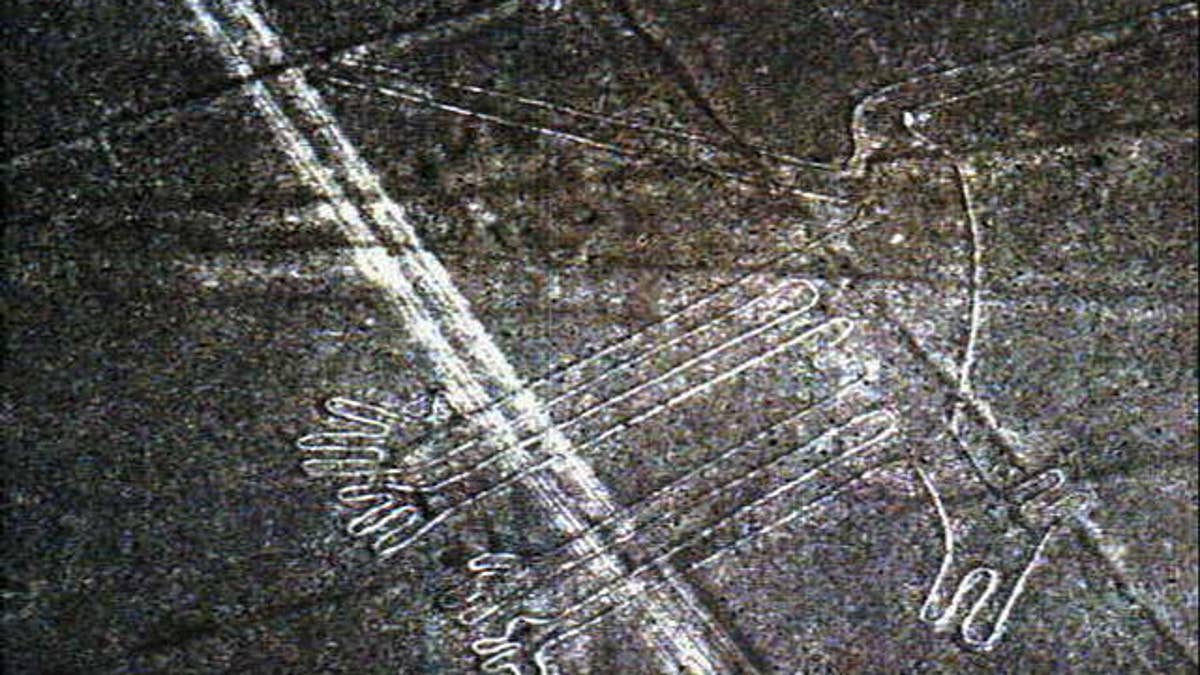
A Nazca geoglyph. (AP Graphics Bank)
Japanese archaeologists have discovered 24 new geoglyphs on the Nazca Plateau in Peru that they say are similar to the animal shapes for which the region is famous – but were created two centuries earlier.
Archaeologists from the University of Yamagata in Japan made the discovery a mile north of the city of Nazca, in central Peru. The shapes are mostly geometrical, including a figure resembling a flame and other less recognizable representations.
According to a report submitted to the Peruvian government by the Japanese team, the newfound figures are smaller and less distinct than the older ones (a spider, a hummingbird, a condor and a monkey) but it would seem that some of the new ones depict llamas.
"Because they have been degraded, it is difficult to determine the exact shape of the picture on the ground of all the animals," the researchers said told the Telegraph.
The head of the team, Dr. Masato Sakai, told the paper they used a three-dimensional scanner and photos to highlight the degraded lines and identify the images.
- Peru Employs Drones To Search And Explore Pre-Incan Archaeological Sites
- Pre-Hispanic Remains Found in Peruvian Sports Center
- Peruvian is the Longest-Running Radio Host, According to Guinness
- Picking crops in remote Peruvian valley where coca growing is a way of life
- For decades, 91-year-old Pitito the clown has kept Peru smiling
- A different kind of drug mule, Peru’s cocaine backpackers
- Peruvians find a new cure-all for ailments: beach therapy
“They made these kinds of geoglyphs on the sides of hills so they could be clearly seen,” he said, adding the images’ sizes range from 16 feet to 66 feet tall.
In all, he said, they identified five distinct new groups of images.
Sakai said the geoglyphs were found in surveys conducted between December 2014 and February of this year. One of his concerns is the damage they have been subjected to due to illegal exploring.
“Nazca geoglyphs are being affected by the expansion of urban areas. We want to preserve them by sharing their importance with local people,” he said.
The team of Asian researchers began investigating the Nazca culture in 2004, and has since found around 50 new geometric figures since.
The Nazca lines and huge animal images were designated as a Unesco World Heritage site in 1994.
Only a few inches deep, the lines were created by removing the top layer of red pebbles to expose the light gray ground beneath. They are believed to have been intended to act as a kind of observatory, to point to the places where the sun and other celestial bodies rose or set in the solstices. Other theories suggest that they were created to be seen by the gods in the sky.
